Anza-Borrego Desert State Park
The Anza-Borrego Desert State Park® is committed to preserve, protect, and "to provide stewardship for the vast array of natural and cultural resources found throughout the Park". Anza-Borrego Desert fossils are a nonrenewable resource and are our most significant link to the biological prehistory of California and the Earth's western hemisphere.
http://www.parks.ca.gov/?page_id=638
|
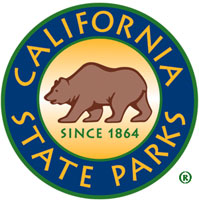 |
Ashfall Fossil Beds State Historical Park
Ashfall is situated on 360 acres of rugged rangeland in the scenic Verdigre Creek valley (Nebraska). Nature trails were developed to help interpret the geology as well as the flora and fauna of the area. Visitors are invited to view the fossil preparation laboratory where they may ask the paleontologists about their work. Educational programs are presented on a regular basis. From the Visitor Center, it is but a short stroll to the Hubbard Rhino Barn, where new discoveries continue to be unearthed.
http://ashfall.unl.edu/
|
 |
Arlington Archosaur Site
The Arlington Archosaur Site is a prolific fossil site that was discovered in northern Arlington Texas by UT-Arlington students in the summer of 2003. Identified fossils include dinosaur teeth and vertebrae along with various crocodile scutes and teeth. Hence the origin of the name for the site, as dinosaurs and crocodiles both belong to the Archosaurs; the "Ruling Reptiles". The excavation of the site continues on today, with UTA students excavating the site for class credit along with Dallas Paleontological Society members and local volunteers. To date, more dinosaur fossils have been recovered from the Arlington Archosaur Site than from any other site in the Dallas Fort Worth Metroplex.
http://www.arlingtonarchosaursite.com/index.html
|
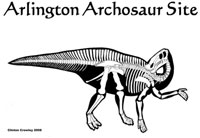 |
Berlin Ichthyosaur State Park
Berlin-Ichthyosaur State Park (Nevada) was first established in 1957 to protect and display North America's most abundant concentration and largest known Ichthyosaur fossils at the time. The park also preserves the turn-of-the-20th century mining town of Berlin as well as the Diana Mine. The Ichthyosaur fossil area is a Registered Natural Landmark and the historic townsite is on the National Register of Historic Places. These national designations speak to the unique value of the resources preserved here.
http://parks.nv.gov/bi.htm
|
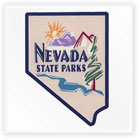 |
Big Bone Lick State Park
The park in Kentucky is significant for its combination of salt springs and late Pleistocene bone beds. Ancient creatures like the mammoth, mastodon, ground sloth and bison once roamed through mineral springs and swamps, now grassy plains covered with trees and shrubs. This site is recognized as the birthplace of American vertebrate paleontology for its significant role in the development of scientific thought regarding extinction and the relationship of geology and paleontology the world over.
http://parks.ky.gov/parks/historicsites/big-bone-lick/
|
 |
Bug Creek Fossil Area
Located primarily within Charles M. Russell National Wildlife Refuge (Montana), the Bug Creek Fossil Area has produced abundant remains of small, Cretaceous mammals. The isolated bones, jaws or jaw fragments, and teeth indicate that these mammals must have been tiny, mouse-sized or smaller. More than 26,000 mammal teeth, 1,000 mammal jaw fragments and hundreds of isolated mammal bones have been excavated, representing 20 species of multituberculates, marsupials and true mammals. Fossils from the Bug Creek Fossil Area have extended the time-range of four families of Paleocene mammals (Eucosmodontidae, Taeniolabididae, Leptictidae and Arctocyonidae) backward into the Cretaceous period. The 804-acre site is also the type locality of five mammal species new to science: Cimexomys minor, Stygimys kuszmauli, Catopsalis joyneri, Procerberus forinicarum and Protungulatum donnae.
|
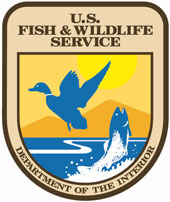 |
Chazy Fossil Reef
The Chazy Fossil Reef was formed 480 million years ago, south of the equator where Zimbabwe is today, in what geologists call the ancient Iapetus Ocean. A world geological treasure, it is the oldest known biologically diverse reef in the history of life on Earth. Originally the reef stretched a thousand miles from what is now Quebec to Tennessee but only a few remnants remain today. The best formations are on Valcour Island on the New York State side of Lake Champlain and on the tiny island of Isle La Motte, Vermont in Lake Champlain. The reef is preserved on Isle La Motte in two preserves, the 20 acre Fisk Quarry and the 83 acre Goodsell Ridge Preserve - both owned and managed by the Isle La Motte Preservation Trust.
http://ilmpt.org
|
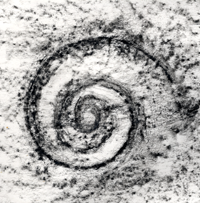 |
Cleveland-Lloyd Dinosaur Quarry NNL
The Cleveland-Lloyd Dinosaur Quarry National Natural Landmark (CLDQ) is a BLM-managed site in Utah that allows visitors to view the densest concentration of Jurassic dinosaur bones ever found. It is probably one of the most puzzling dinosaur bone deposits ever found as well. Way too many predators, bones wonderfully preserved while skeletons are almost entirely destroyed, scattered yet concentrated; CLDQ has been puzzling scientists for over 80 years. Knowledgeable and friendly people staff the site during the open season and are happy to discuss the site with you.
|
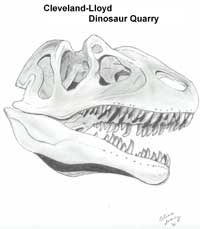 |
Devonian Fossil Gorge
Coralville Lake is managed by the U.S. Army Corps of Engineers as a multiple use project providing primary benefits in flood control and low flow augmentation, with secondary benefits in recreation and natural resource management. The Corps owns almost 30,000 acres around Coralville Lake, about half of which is leased back to the Iowa Department of Natural Resources and the University of Iowa, which provides many recreational opportunities. Activities include camping, boating, swimming, picnicking, hiking, mountain biking, disc golf, bird watching, and the Devonian Fossil Gorge. Three major campgrounds at Coralville Lake provide approximately 500 campsites. The campsite types range from primitive tent to full hook-ups with water, sewer and electricity at the sites. The main office and Visitor Center are located at the east end of the dam. Coralville Lake is located just to the North of Iowa City, Iowa which is home to the University of Iowa, Coral Ridge Shopping Center, the University of Iowa Hospital & Clinics, a VA Hospital and numerous arts and cultural events.
http://www.mvr.usace.army.mil/Missions/Recreation/Coralville-Lake/Recreation/Devonian-Fossil-Gorge/
|
 |
Dinosaur Ridge
The Friends of Dinosaur Ridge was founded in 1989 with the purpose of preserving the fossils on Dinosaur Ridge near Morrison, Colorado and educating the public about the natural history of the area. Its mission was later expanded to include the fossil sites at Triceratops Trail in Golden, Colorado. The Friends of Dinosaur Ridge is a nonprofit 501c3 organization, and all donations are tax deductible.
http://www.dinoridge.org/
|
 |
Dinosaur State Park
Dinosaur State Park (Connecticut) is one of the largest dinosaur track sites in North America. Beneath our geodesic dome, you will find an exceptional display of early Jurassic fossil tracks that were made 200 million years ago. The Museum at Dinosaur State Park presents a bird's-eye view of the preserved Mesozoic floodplain covered with tracks, dioramas of Triassic and Jurassic environments, collections of fossils, and interactive exhibits.
http://www.dinosaurstatepark.org/
|
 |
Dinosaur Valley State Park
Dinosaur Valley State Park (Texas) is more than just dinosaur tracks. It is the home of the first sauropod trackway ever discovered in the world. Dinosaurs from the Cretaceous age left their footprints in the soft mud of a shallow sea that covered Central Texas 113 million years ago. Here in the riverbed of the scenic Paluxy River you can see world-class examples of sauropods and three-toed tracks of theropods.
http://tpwd.texas.gov/state-parks/dinosaur-valley
|
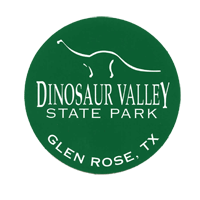 |
Falls of the Ohio State Park
The mission of the Falls of the Ohio State Park (Indiana) is to provide opportunities for education and recreation while protecting the resources.
http://www.fallsoftheohio.org/
|
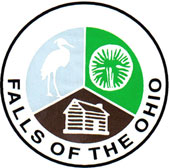 |
Fossil & Prairie Park Preserve
The 402 acre Fossil & Prairie Park Preserve is a hidden oasis of prairie grasses/forbs and fossils amongst the patchwork quilt of Iowa's corn and soybean fields. The Devonian fossils found on site were uncovered by the defunct Rockford Brick & Tile Company. Come explore the abandoned quarry and collect your own relics of Iowa's ancient seas. Brachiopods, criniods, gastropods, bryozoans, and pelecypods abound while diligent hunters will find colony corals, horn corals and cephalopods.
http://www.fossilcenter.com
|
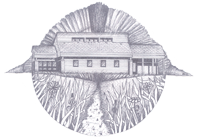 |
Fossil Rim Wildlife Center
Fossil Rim is the first facility of its kind to have been accredited by the American Zoo and Aquarium Association. Fossil Rim Wildlife Center participates in a worldwide network of wildlife conservation organizations working to restore the delicate balance between people, animals and the environment. Fossil Rim Wildlife Center represents over 1000 animals, 50 species of native and non-native animals living peacefully at the ~1,700-acre center.
http://www.fossilrim.org
|
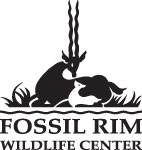 |
Garden Park Fossil Area
Garden Park Fossil Area is an internationally known paleontological site that was one of the primary areas responsible for generating worldwide interest in dinosaurs during the late 1800's. Fifteen species of dinosaurs, nine of which were new, were recovered from here at that time. Fish, crocodile, turtle, and mammal fossils have also been recovered, making this site one of the oldest and richest fossil sites in the United States. The Garden Park Fossil Area is managed by the Bureau of Land Management, Royal Gorge Field Office located in Cañon City, Colorado. The Garden Park Fossil area is also a member of the Hands on the Land national network of field classrooms and agency resources.
http://www.handsontheland.org/garden-park/
|
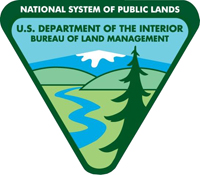 |
Ghost Ranch
Ghost Ranch, an education and retreat center of The Presbyterian Church (USA) in New Mexico, grounds its life and program in reverence, hospitality for all people, and respect for creation.
http://www.ghostranch.org/
|
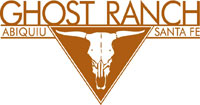 |
Ginkgo Petrified Forest State Park
Ginkgo Petrified Forest State Park (Washington) is a 7,470-acre park with year-round camping at Wanapum recreational area. The park features 27,000 feet of freshwater shoreline on the Wanapum Reservoir on the Columbia River. Petrified wood was discovered in the region in the early 1930s, which led to creation of the park as a national historic preserve.
http://www.parks.wa.gov/parks/
|
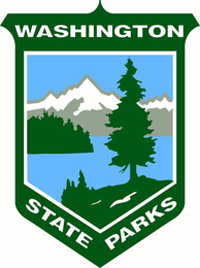 |
Gray Fossil Site
The Gray Fossil Site is part of the East Tennessee State University and General Shale Brick Natural History Museum which is dedicated to understanding, preserving and interpreting biodiversity of the Southern Appalachians through time, using an interdisciplinary approach. The Natural History Museum seeks to understand and interpret the Gray Fossil Site for people of all ages and origins through scientific research, curriculum-based educational programs, and informal hands-on experiences.
http://gfsm.handsonmuseum.org/
|
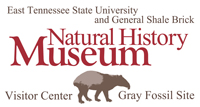 |
Ladonia Fossil Park
Home to the North Sulphur River fossil beds, the park offers Cretaceous Period and Ice Age fossils for collectors and research. Located in Ladonia, Texas. The channelized riverbed, dry most of the time, stretches a distance of about ten miles to the west of and ten miles to the east  of Ladonia Fossil Park and is open year round for fossil hunting. The bed is approximately 300 feet wide and 80 feet deep. Cretaceous fossils including mosasaurs and plesiosaurs are found in the bed while Pleistocene fossils including mastodons and mammoths are found in the banks. Of particular interest to fossil hunters is the informal "red zone" that outcrops in the riverbed. More information may be obtained by calling Ladonia Fossil Park Office at 903-367-7011.
cocladonia.org/ladonia-fossil-park.html
|
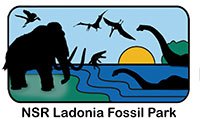 |
The Mammoth Site
Mission Statement
The mission is the preservation, research, and interpretation of the Mammoth Site of Hot Springs, South Dakota and the promotion of understanding and appreciation of the Natural History of the Black Hills with an emphasis on the late Pleistocene.
Purpose
- To investigate and interpret this unique late Pleistocene (Ice Age) natural death trap for mammoths and related fauna and flora.
- To protect the scientific integrity of the Site through the preservation and collection management of fossils and other geological materials.
- To serve as a world-class center specializing in mammoth research.
- To provide comprehensive educational programming based on the science of the Site and surrounding natural history.
- To foster cooperative efforts in research and education worldwide.
Vision Statement
The vision of the Mammoth Site has always been to establish a significant institution contributing to scientific knowledge and sharing that knowledge with the public. That knowledge is shared through programs, exhibits, publications and professional scientific interactions directed toward the introduction and engagement of all people to the world of the Pleistocene (Ice Age). Our aim is to continue to be a world class science center that will remain viable and relevant for generations to come.
http://mammothsite.com/
|
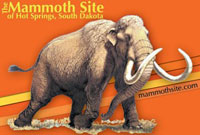 |
Maryland Dinosaur Park
Dinosaur Park is a 41-acre park in Laurel, Maryland, featuring a rare deposit of fossils from the Cretaceous Period (144 to 65 million years ago). The Park is part of a geologic formation called the Muirkirk Deposit that consists of sediments and clays that occur south of Washington D.C. to north of Baltimore. Here, paleontologists have unearthed fossilized bones of several kinds of dinosaurs, early mammals, and fossils of trees and early flowering plants.
http://terpconnect.umd.edu/~gdouglas/index.html
|
|
Mastodon State Historic Park
Mastodon State Historic Site (Missouri) contains an important archaeological and paleontological site - the Kimmswick Bone Bed. Bones of mastodons and other now-extinct animals were first found here in the early 1800s. The area has gained fame as one of the most extensive Pleistocene ice age deposits in the country and has attracted scientific interest worldwide.
http://www.mostateparks.com/mastodon.htm
|
 |
Mineral Wells Fossil Park
The park as it exists today is a result of 20 years of erosion of the old City of Mineral Wells landfill's borrow pit, which was closed in the early 1990s. The erosion of the borrow pit has revealed fossils documenting ancient sea species of crinoids (sea lilies), echinoids (urchins), brachiopods, pelecypods (clams and oysters), bryozoans, corals, trilobites (arthropods), plants and even primitive sharks.
Enjoy your fun, educational experience as you step backwards in time to when this part of Texas was covered by the oceans. Study your fossils and note their differences, rather than their similarities. You will be amazed at the variety. Enjoy a taste of paleontology and geology and looking backwards in time. Let your imagination run wild in the time before the cities, the buffalo, and the land.
http://www.mineralwellsfossilpark.com/
|
 |
Mississippi Petrified Forest
The Mississippi Petrified Forest was developed in 1963 with the intent of preserving this unique geological site for the benefit of future generations. Now in its 50th year of operation, this venue attracts thousands of visitors every year from all 50 states and numerous foreign countries. In 1965, the Mississippi Petrified Forest was designated a National Natural Landmark. In addition to the mile long nature trail that showcases the massive 36 million year old petrified trees, the visitors center features a world class earth science museum displaying spectacular and rare mineral and fossil specimens from the world over, a black light fluorescent mineral exhibit, a distinctive gift shop, an RV and tent campground, pavilion and picnic area and other fun and educational displays and activities. The property is open daily except Christmas and Thanksgiving, is pet friendly and handicap accessible, and is a favorite destination for school field trips.
https://www.mspetrifiedforest.com/index.php
|
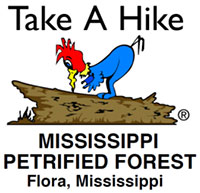 |
Ogden Eccles Dinosaur Park
Dinosaur Park is an exciting collection of creatures from prehistoric crawlers, to predators, to marine animals, and even flying reptiles. More than one hundred dinosaur sculptures fill the park. These realistic full-size sculptures are based on actual fossil skeletons, and are brought to life by robotics, artistic details, and a state-of-the-art sound system. Dinosaurs indigenous to Utah are a special feature here, including past residents like Triceratops, Utahraptor, and Parasaurolophus. Education is the primary goal of Dinosaur Park, with a wide array of intriguing exhibits designed to help you be a paleontologist for a day and get hands-on knowledge in the science of cool.
http://www.dinosaurpark.org/
|
 |
Ohiopyle State Park
Located at the southern reaches of the Laurel Ridge in Pennsylvania, Ohiopyle State Park encompasses approximately 20,500 acres of rugged natural beauty. Passing through the heart of the park, the rushing waters of the Youghiogheny River Gorge are the centerpiece for Ohiopyle. Fossils can be found throughout the park, and are easily seen along the edge of the Ferncliff Peninsula, a National Natural Landmark, including Cordaites leaves, Lepidodendron scale, and giant Calamites.
http://www.dcnr.state.pa.us/stateparks/findapark/ohiopyle/index.htm
|
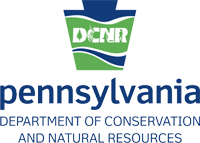 |
Penn Dixie Fossil Park and Nature Reserve
The Hamburg Natural History Society (HNHS) promotes the hands on study of natural sciences, including geology, astronomy, and ecology through the operation of the Penn Dixie Fossil Park and Nature Reserve, a tourist attraction for individuals of all ages and backgrounds.
http://penndixie.org
|
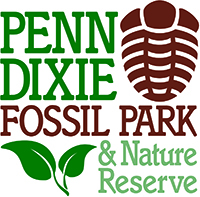 |
Prehistoric Trackways National Monument
The Prehistoric Trackways National Monument was established in 2009 to conserve, protect, and enhance the unique and nationally important paleontological, scientific, educational, scenic, and recreational resources and values of the Robledo Mountains in southern New Mexico. The Monument includes a major deposit of Paleozoic Era fossilized footprint megatrackways within approximately 5,280 acres.
The trackways contain footprints of numerous amphibians, reptiles, and insects (including previously unknown species), plants, and petrified wood dating back 280 million years, which collectively provide new opportunities to understand animal behaviors and environments from a time predating dinosaurs. The site contains the most scientifically significant Early Permian track sites in the world.
https://www.blm.gov/publish/content/nm/en/prog/NLCS/PT_NM.html
|
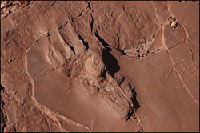 |
St. George Dinosaur Discovery Site at Johnson Farm
The mission of the St. George Dinosaur Discovery Site (Utah) is to research, preserve, and exhibit the fossil resources and story for the benefit, education, and enjoyment of the community, the general public, and the scientific world.
http://www.dinosite.org/
|
 |
Stonerose Interpretive Center
It is the mission of the Stonerose Interpretive Center (Republic, Washington) to promote both public and scientific interest concerning paleoenvironments and geological features in Ferry County and immediate surrounding areas. This mission will be accomplished by collecting, preserving, exhibiting, and interpreting appropriate natural objects; by research, outreach and by exchange of information with other educational and research institutions.
http://stonerosefossil.org/
|
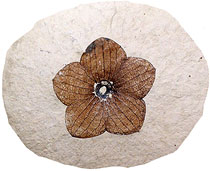 |
Tule Springs Ice Age Park
Located in the northern part of the Las Vegas Valley, Tule Springs is a world-renowned mammoth fossil site, currently managed by the Bureau of Land Management (BLM). In 1962 National Geographic documented a "Big Dig" at Tule Springs. The significant four-month study cataloged thousands of Ice Age mammal fossils including Columbian Mammoth, Ground Sloth, American Lion, Camelops, Bison and ancient species of Horse.
http://www.tulespringslv.com/
|
 |
Waco Mammoth Site
The Waco Mammoth Site (Texas) sits in a 100-plus acre stretch of wooded parkland along the Bosque River. Covered in sprawling oak, mesquite and cedar trees, the sites offer an escape from the modern world and provides a glimpse into the lives of Columbian mammoths. The Waco Mammoth Site includes a breathtaking dig shelter that creates an atmosphere of an art gallery. Natural light floods into the shelter from all directions and a suspended walkway provides a stunning overhead view of the mammoths.
http://www.waco-texas.com/cms-waco-mammoth/
|
 |

































